2024 Celebrating Guḍhī Pāḍavā: “[Guḍhī Pāḍavā, New Year Day of Śhālivāhan Calendar]. And they have the Kalaśha and the Shawl of the Goddess as the emblem or you can call it as a flag of Śhālivāhanas.”

"Chaitra is the month. And this is the time when -- [Marathi] -- Gaurī is the Chaitra. So the establishment of the Gaurī is taken place during these nine days. But Gaṇeśha has to be established before anything else. Though first Gaurī had to come, you can see that. Gaurī had to come first to establish Gaṇeśha. But Gaṇeśha is always put before even Gaurī. Before the Pūjana of the, worship of the Gaṇeśha, nothing starts; because He's the one who takes out all the obstacles, all the negativities, all the hurdles that are going to come up, all the attentions that are here and there. So that's why we first worship Gaṇeśha, just to ask Him to protect us. "
1981-0404 Śhrī Gaṇeśha Gaurī Pūjā, Āśhram, 10 Clarence Street, Burwood, Sydney, New South Wales, Australia
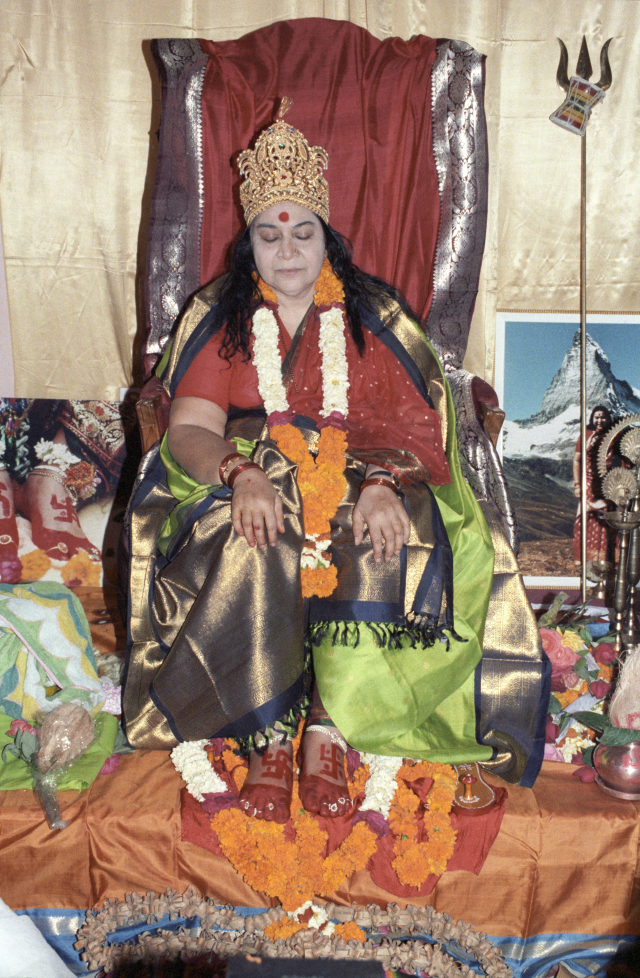
"So this New Year's Day is the first day of Advent of Goddess -- the nine days there are.
......
So today is the day to mark absolutely the first day when She incarnated on this Earth. That's the day also of the Gaurī, because Virgin is the first form of the Goddess."
1981-0404 Śhrī Gaṇeśha Gaurī Pūjā, Āśhram, 10 Clarence Street, Burwood, Sydney, New South Wales, Australia
"In India, Navarātri falls twice in a year. Once it is in the month of Chaitra as it is today.
On this day Devī is worshiped as Śhailaputrī, means the daughter of Himalaya. Devī has many other names also but first of all She incarnated as Śhailaputrī in the cold of Himalayas. She incarnated and whatever She was to do, She started there.
Further story is known to you. [King] Dakṣha did not invite Lord Śhiva in the Havana that he performed and Śhailaputrī was the consort of Lord Śhiva. She is called Satī because She entered the Holy fire of Havana and ablated Herself. But by then Lord Śhiva reached there. He lifted Her burnt up body from the fire. Burnt pieces of the body of Śhailaputrī fell at many places. All these places are considered to be Śhakti Pīṭhas, the places of worship, as there is in Vindhyāchala and many other places. Her power moves there and it is said that it Sanctifies everything.
Her seventh power is considered to be the Power of Destruction. Śhakti manifested Itself on the right side as Sāvitrī and Gāyatrī but the destroying force was manifested in the center.
In the form of Durgā and Her other forms manifested in Heart chakra. She is present there.
If some one hurts you, confuses or disturbs you then this power will protect you and destroy your enemy.
When Kuṇḍalinī rises and reaches the Heart chakra then it manifests and becomes more powerful and effective because Kuṇḍalinī is Jagadambā. In Sahaja Yoga when Kuṇḍalinī is awakened it settles in Heart chakra. It protects you and takes care of you nicely."
2000-0405 Guḍhī Pāḍavā Pūjā (Hindi), Noida Bhavan, New Delhi, India
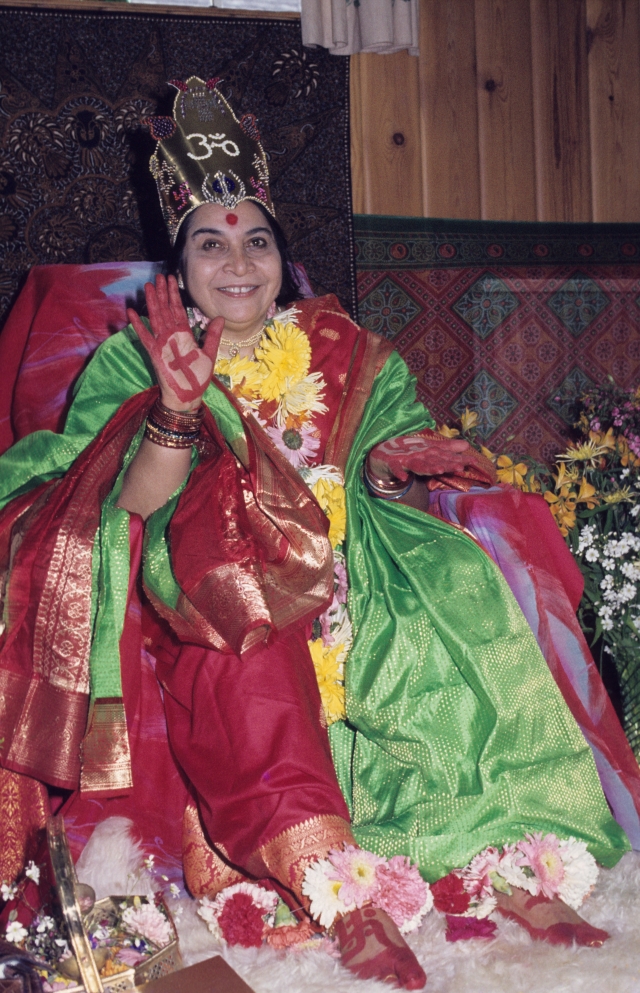
"The first name of the Goddess is Śhailaputrī, as you know, that Śhailaputrī means the daughter of the mountains."
1985-0502 Talk to Sahaja Yogis, Nirānanda, Āśhram, Vienna, Austria
"So this day is celebrated because it's a new year day and also because the New Moon appears on this day. It's ... is called Guḍhī Pāḍavā. On this day they put up a small pitcher on a stick with a small flag. The pitcher represents the Kuṇḍalinī.
Śhālivāhana Kings were worshipers of the Goddess and it is said that they used to present Shawl to the Goddess and they were also called as Sāt[a]vāhanas in the beginning because they recognized the seven chakras [Sāt[a]vāhana means seven chakras]. That's why they were earlier called as Sāt[a]vāhana but later it changed to Śhālivāhana. But the symbol of Śhālivāhana used to be guḍhī means a flag and above that a pitcher having a particular shape, which represented the Kuṇḍalinī. They were worshipers of Kuṇḍalinī and recognized it.
That is the reason that they have made this thing like that and all those, who accept it, put up a 'guḍhī' in their houses. They [Śhālivāhans] wanted to welcome Kuṇḍalinī on this day and Kuṇḍalinī [in the form of pitcher] was exhibited specially on that day."
2002-0413 Guḍhī Pāḍavā Pūjā (Hindi), Terrace Garden, Palam Vihar, Gurgaon, Haryana, India
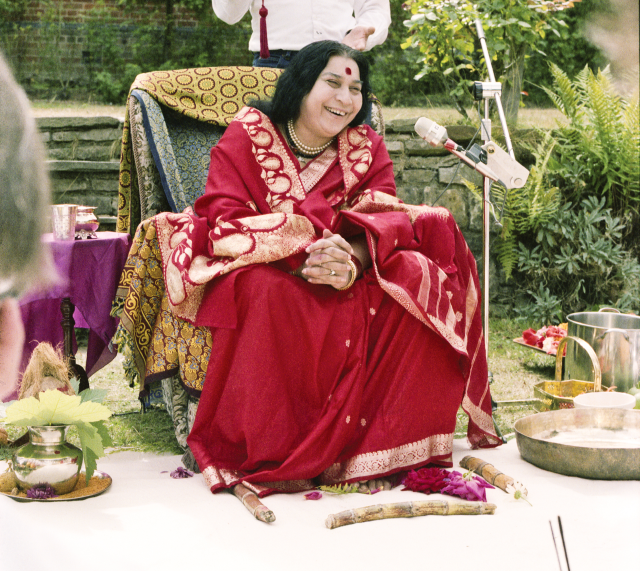
"Today is the day, as you know, My forefathers called it the first day of the year [Guḍhī Pāḍavā, New Year Day of Śhālivāhan Calendar]. And they have the Kalaśha and the Shawl of the Goddess as the emblem or you can call it as a flag of Śhālivāhanas."
1985-0321 Birthday Pūjā (Marathi + English), Completely Surrender Our Lives to Sahaja Yoga and People Should See through You the Greatness of Sahaja Yoga (We Have Started Vishwa Nirmala Dharma and the Great Religion of Realized Souls), Mumbai, Maharashtra, India
"I was telling them that after the introduction of this calendar the Śhālivāhan King founded his kingdom and lived there from the day of the Guḍhī Pāḍavā [Guḍhī is a symbol of auspiciousness]. Since you know all this I did not tell you and explained to them in English.
With respect to the Guḍhī Pāḍavā the shawl has great significance. The Śhālivāhan Kings always carried the Goddess's shawl with them. You know the significance of Devī's shawl. You know it gives Her beauty. With the shawl She protects Herself from cold and wind. Also with it She protects Her chastity, as well as if any dirt is about to touch Her body it is prevented. So, a shawl which is offered to Goddess symbolizes Her protection, meaning, 'As You protect us we offer You this.' Further if the children are sleeping or are sick or have a problem, then She covers them with the shawl. So shawl is very important. You know, in the past it was a practice with all people in Maharashtra to take [put a] shawl over their bodies. Now that we have become modern we do not take it."
1984-0126 Śhrī Devī Pūjā (English + Marathi), 35th Republic Day Celebration, Maṅgal Karyalaya, Rāhurī, Maharashtra, India
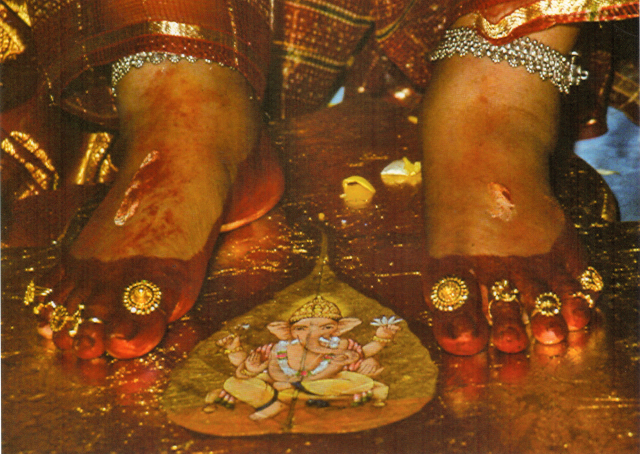
"...... Kuṇḍalinī is the Gaurī and we have got Gaṇeśha sitting in the Mūlādhāra chakra. So we have Mūlādhāra as the abode of the Gaurī, of Kuṇḍalinī. And the protection of the Kuṇḍalinī is done by Śhrī Gaṇeśh.
As you know, Śhrī Gaṇeśha is the Deity which is for our innocence."
1991-0408 Śhrī Gaurī Pūjā, Residence near Āśhram, Parnell, Auckland, New Zealand]
"So today I wish you happy New Year for a journey in the spiritual life of this world."
1976-0330 Guḍhī Pāḍavā Pūjā (the day before Guḍhī Pāḍavā), We Have to Be in Meditation Meditation (Be in Thoughtless Awareness and Meditation Is Where You Are No More), New Delhi, India
Śhrī Gaṇeśha Atharva Śhīrṣha
video
Zulzul Vahe
video
Jay Gaṇapati Vandan Gan nayak
video
Jay. Jay. Janani Śhrī Gaṇeśha Kī
video
Jay Jay Bolo Nirmal Gaṇeśha Kī
video
Gajānana Śhrī Gaṇarāyā
video
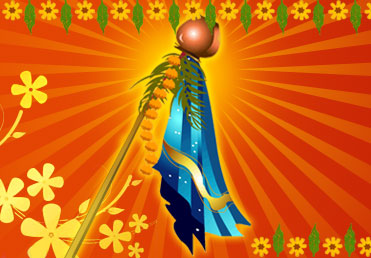
"Today is new year day and the beginning of the Moon. That is why this day is given so much significance. It is known as Guḍhī Pāḍavā.
A flag is put on a stick and on it is put a small pitcher. This pitcher represents Kuṇḍalinī. It is taken as a symbol. The Śhālivāhanas were the devotees of the Devī [Goddess] and it is told that they used to offer shawl to the Goddess. In the beginning they were called Sāt[a]vāhans because they worshiped Seven Plexuses and this Sāt[a]vāhana was ultimately changed into Śhālivāhana. But the symbol of Śhālivāhana is the same. They put up a 'guḍhī' means a flag and a small pitcher is put on it as a symbol. This pitcher has a particular shape which represents Kuṇḍalinī.
So they were the worshipers of Kuṇḍalinī and followed it. That is the reason they made this symbol in this way. All those who follow Kuṇḍalinī put up a guḍhī in their houses and also put a flag on it and thus it is indicated that they welcome Kuṇḍalinī and exhibit it in a special way."
2002-0413 Guḍhī Pāḍavā Pūjā (Hindi), Terrace Garden, Palam Vihar, Gurgaon, Haryana, India
Jai Śhrī Mātājī!
Wishing you all a happy Guḍhī Pāḍavā!
On behalf of the festivity team!